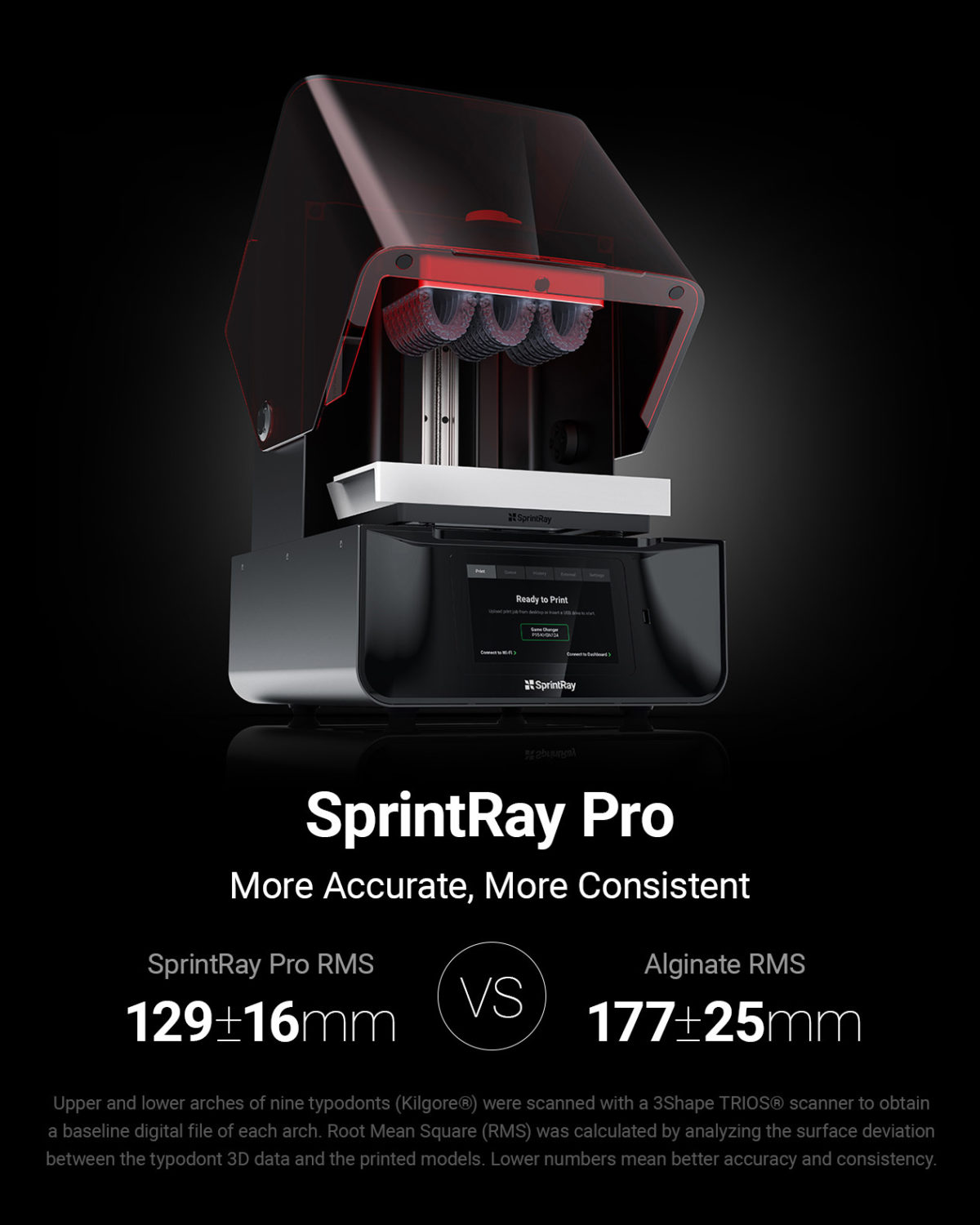Highlights:
- Finding reputable claims about 3D printer accuracy can be difficult
- Many claims about accuracy are from studies performed internally by the manufacturer
- XY resolution can be a useful spec, but verified accuracy provides a much fuller picture
- Tufts University just tested the accuracy SprintRay Pro, finding it to be superior than alginate impressions and stone casting for creation of dental models

One of the hesitations holding back the adoption of dental 3D printing is the question of accuracy. Anxiety around materials, speed, and price are often underpinned by the lingering suspicion that, when all is said and done, the output of a desktop 3D printer might not stand up to the accuracy demands of real-life clinical use. If the aligners created from printed models don’t fit, after all, then the whole enterprise of in-office 3D printing can fall short of the mark. Fortunately, clinicians have found that, given the right hardware and materials, this is not the case.
In the intervening years since 3D printing landed in dental offices, much has been made of the accuracy issue. Intrepid clinicians and labs, undaunted by skepticism, marched forward in their private practices, demonstrating that the technology could be useful in a clinical environment, changing the perception from tinkerer’s toy to production workhorse. As dental 3D printers have become a more mainstream option for in-office manufacturing, dental universities have begun releasing their findings about accuracy, and the results speak pretty clearly: some of these machines are incredibly accurate when used as part of a fully-digital workflow, often exceeding the clinical requirements of dentistry.
Taking Stock of the Accuracy Landscape
Finding reliable studies of dental 3D printer accuracy isn’t always easy. Verifiable, repeatable studies take time, resources, and expertise to complete. But finding trusted sources that verify the accuracy of a 3D printer is important. Dentistry demands extremely tight tolerances, so any new piece of technology introduced into the practice needs to be able to deliver highly-accurate results.
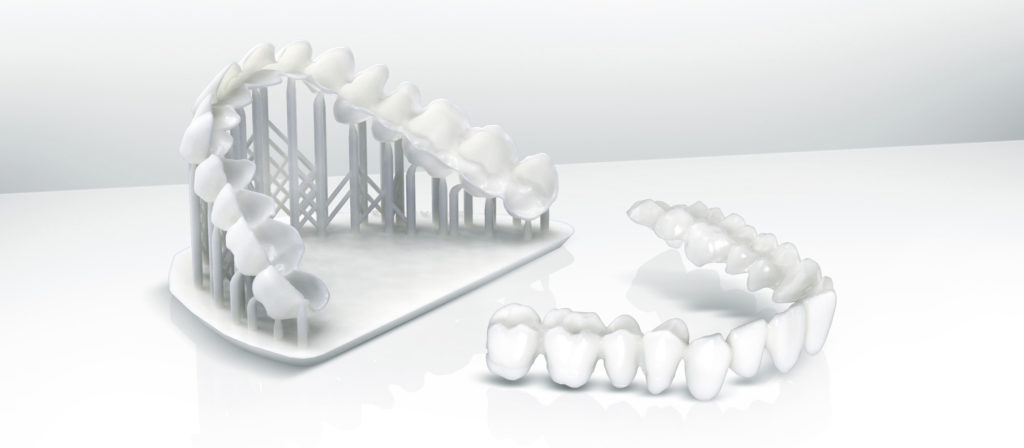
When 3D printer OEMs publish claims about final print accuracy, they are often the results of internal testing. While internal tests can be a helpful metric, it’s important to keep in mind that the results are motivated, not verified by an independent third party, and therefore not necessarily designed to be repeatable. Even if the results are genuine, the test may be designed specifically to play to the strengths of a given product. When seeking accuracy numbers, it’s best to find data published by reputable universities or dental journals. Just as with any dental product, 3D printer manufacturer claims should always be supplemented to corroborating evidence from dental schools and other credible sites.
Understanding Dental 3D Printer Accuracy
Methodologies for determining the accuracy of 3D printers vary, but the foundational principles tend to remain similar:
- Establish a physical model to use as a baseline
- Digitize model using a digital scanner
- Use 3D printer to fabricate new model based on digital scan
- Digitize the newly-fabricated model using a digital scanner
- Utilize CAD software to measure the difference in dimensional accuracy of second scan (3D printed model) against first scan (original model)
- Repeat until statistically significant data set is reached
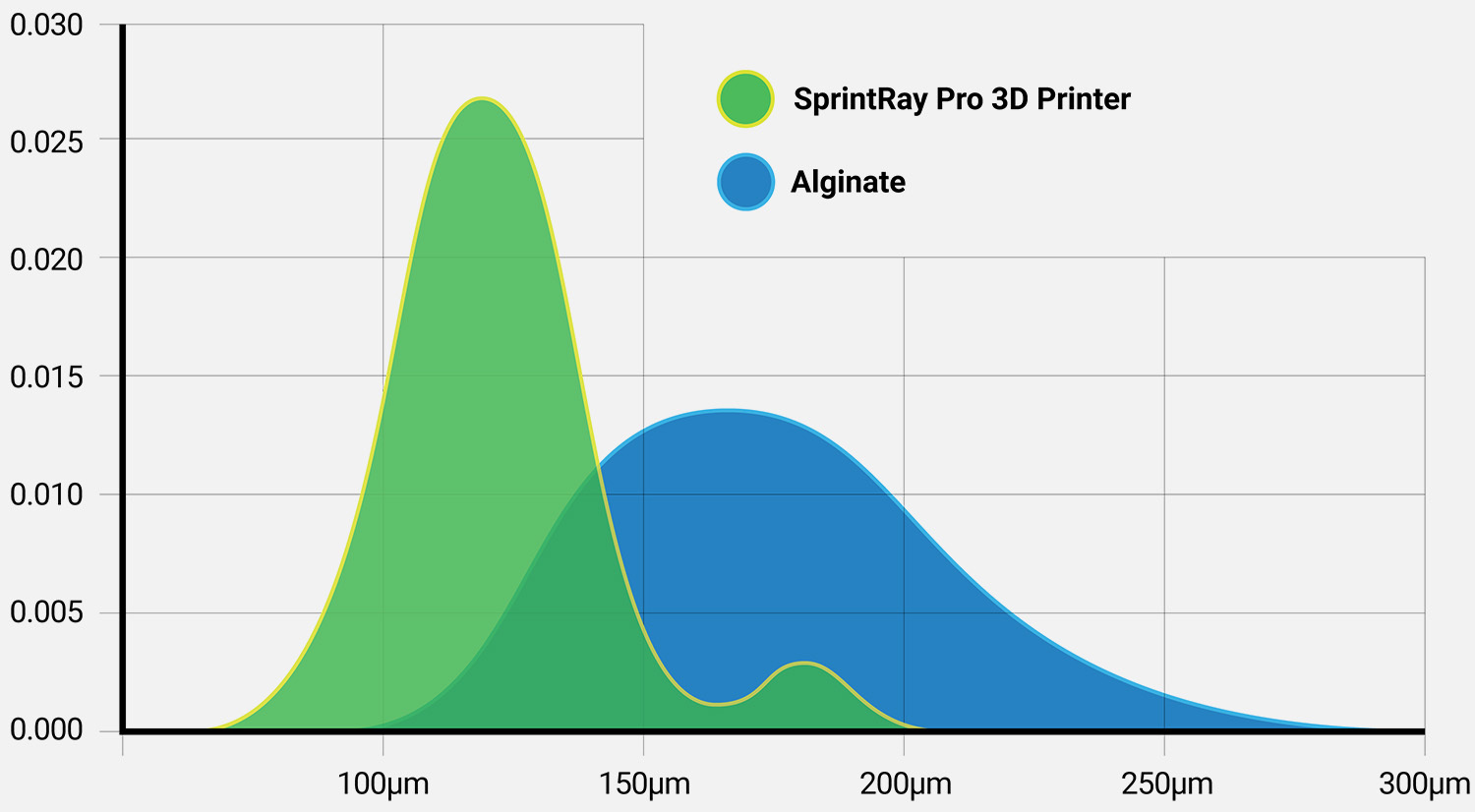
Depending on the software and particular methods used, this process can measure thousands of individual points of data on each scanned model. The numbers are added and an average is reached. This average, a difference usually expressed in microns, is a representation of the printer’s dimensional accuracy. Using this method, a printer with a higher average deviation from the original data set (in this case, the scan of the first physical model) scores a lower overall dimensional accuracy.
Accuracy vs. XY Resolution
XY resolution and accuracy are sometimes used interchangeably in the world of 3D printing, but they are crucially different. Understanding that difference, and what it means for the final output of 3D printed dental appliances, is crucial to choosing the right printer for your office.
Defining XY resolution
XY resolution refers to the smallest single point of light that a 3D printer can deliver. This number is worthy of attention for a few reasons. First, XY resolution tells us something about how smooth the final surface texture of printed parts can be. A smaller number in the XY resolution category means that the printer can, theoretically, create finer detail. But XY resolution represents only the finest detail that can be rendered by a printer under theoretical conditions.
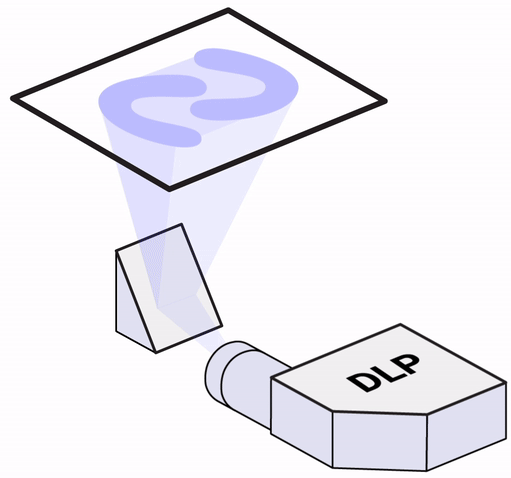
A lower XY resolution value means that a projection of light onto paper in perfect conditions could show finer detail, but mechanical and optical imprecision will often largely invalidate these claims. This is especially true among budget printers, which frequently use off-the-shelf parts and resins that are white-labeled, rather than bespoke materials and purposive construction. Though it would be convenient for many manufacturers, XY resolution is not a shortcut to accuracy.
Defining Accuracy
Accuracy is the measurement of a 3D printer’s real-world ability to create parts that are true to the exact dimensions of the digital blueprint. Parts that have a smooth surface finish aren’t useful if they don’t accurately represent a patient’s dentition, particularly in the case of fitted parts. Imagine a surgical guide printed three times, where each time the guide holes had a slightly different angle. Even very small variations in accuracy can have adverse effects on clinical outcomes.
Though accuracy is more difficult to measure than XY resolution, it is the only full way to express a 3D printer’s output quality. Build quality and components, such as chassis construction, Z-axis motor quality, tank materials, build plate surface, resin calibration, and many more factors can and do affect dimensional accuracy. As discussed in the previous section, the light delivery method, typically a choice made between DLP, Laser-SLA, and LCD, also plays a substantial role in accuracy. The best way to determine a printer’s clinical accuracy is by obtaining the accuracy metric through impartial, third-party testing.
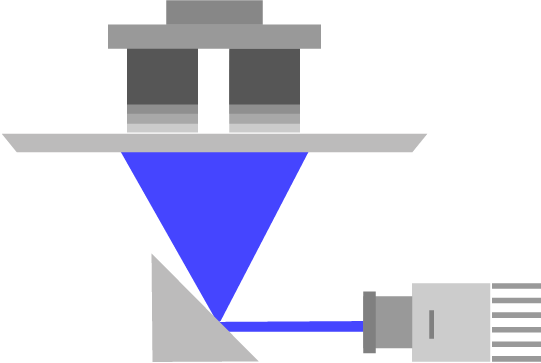
Tufts Study: Dental 3D Printer Accuracy
A recent study performed by a major university of dental medicine measured the accuracy of SprintRay Pro and compared it to the accuracy of a model poured up in stone from an alginate impression. The findings concluded that SprintRay Pro, using SprintRay Die & Model Tan resin, created models that were more accurate than their conventional counterparts.

For clinicians and dental professionals concerned about accuracy, SprintRay Pro presents a highly-flexible manufacturing package that is more accurate than stone. Alginate impressions and models have long been considered clinically acceptable for their applications. . But SprintRay Pro improves the accuracy of model creation when compared to traditional methods while offering increased speed and flexibility. Though performance and efficiency are often in opposition to each other, highly accurate 3D printing is one place in which they operate in harmony.







